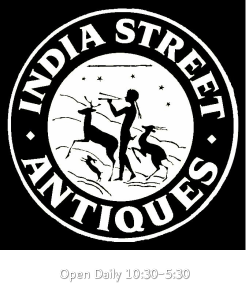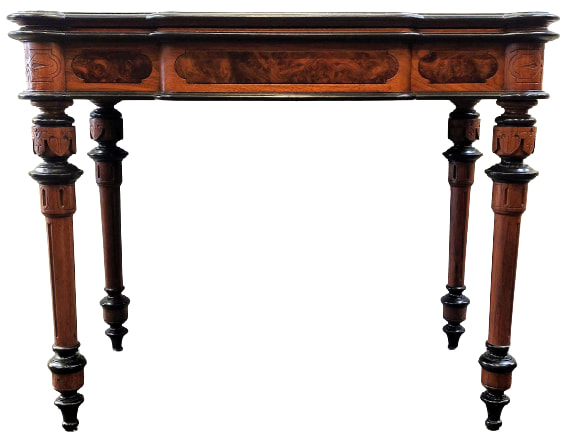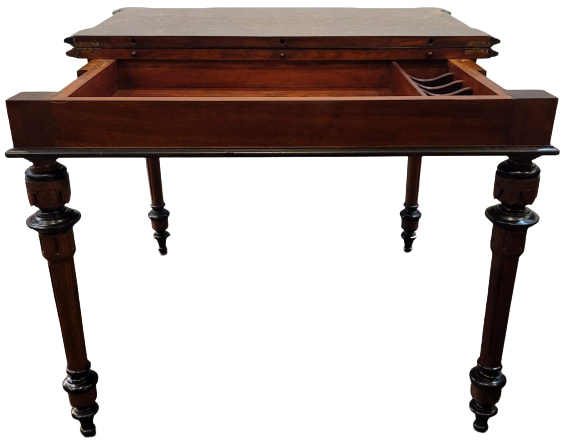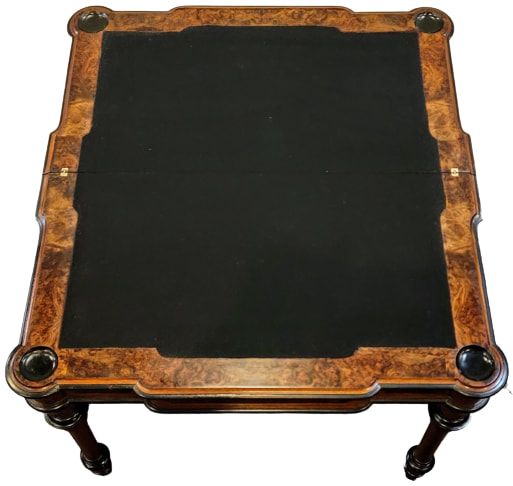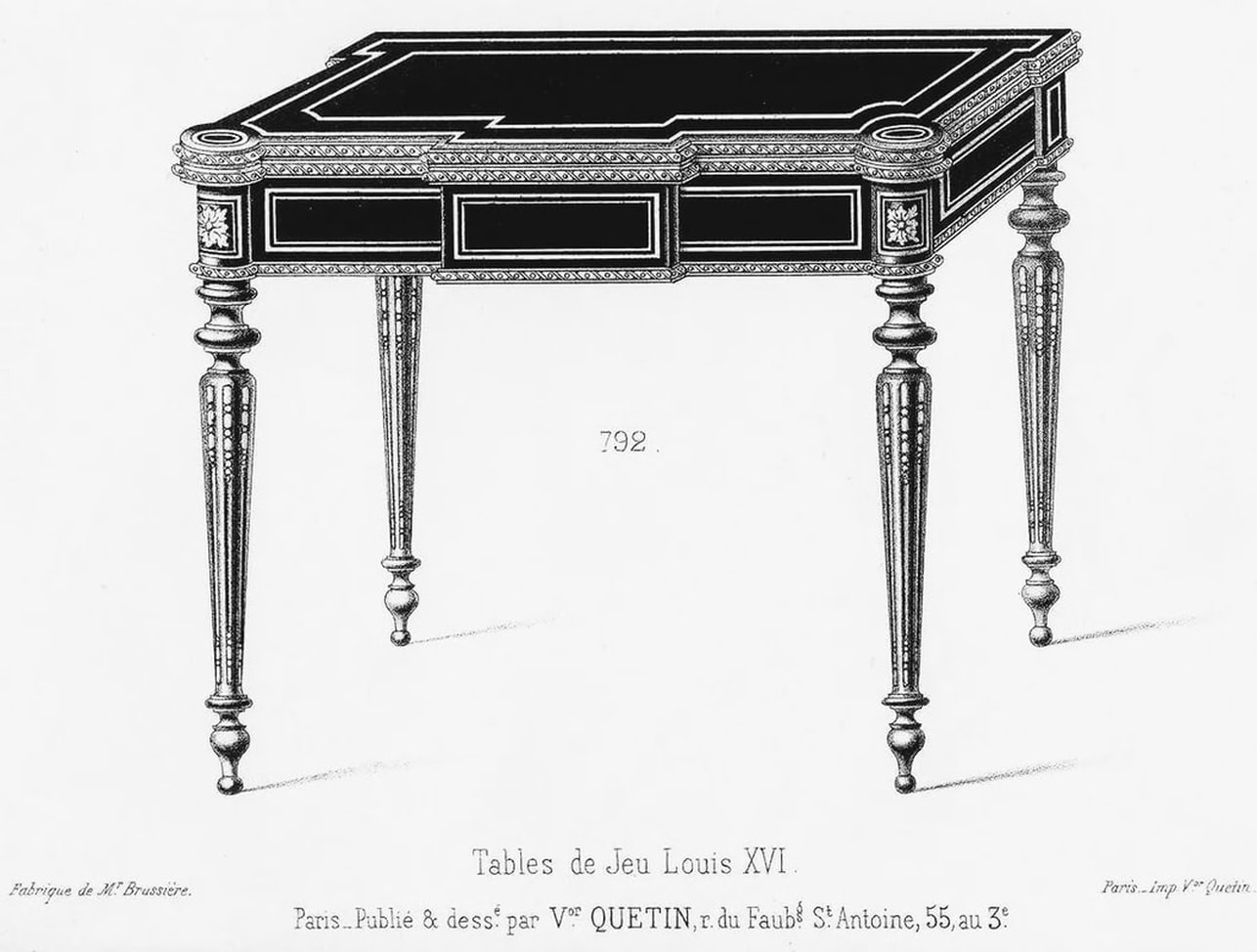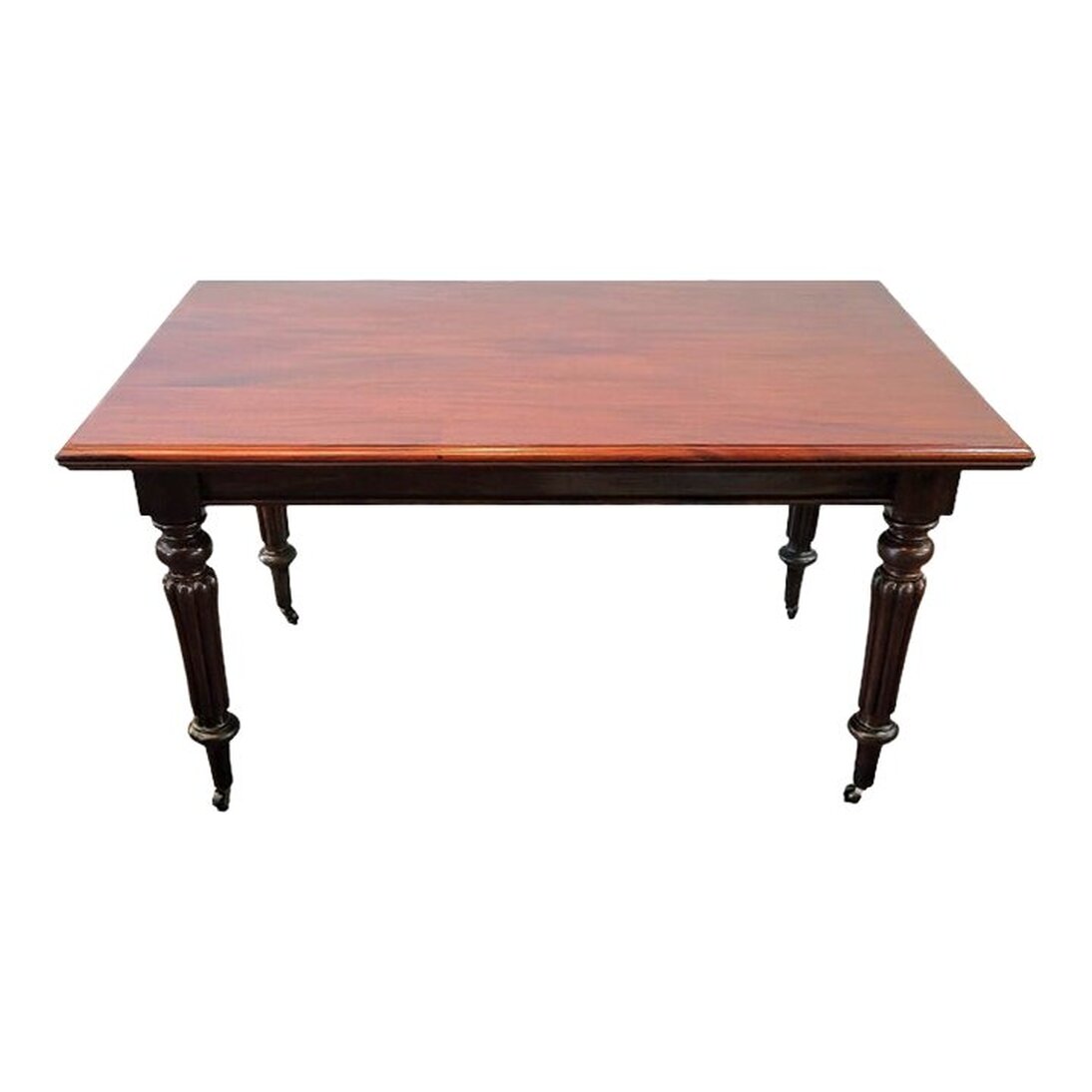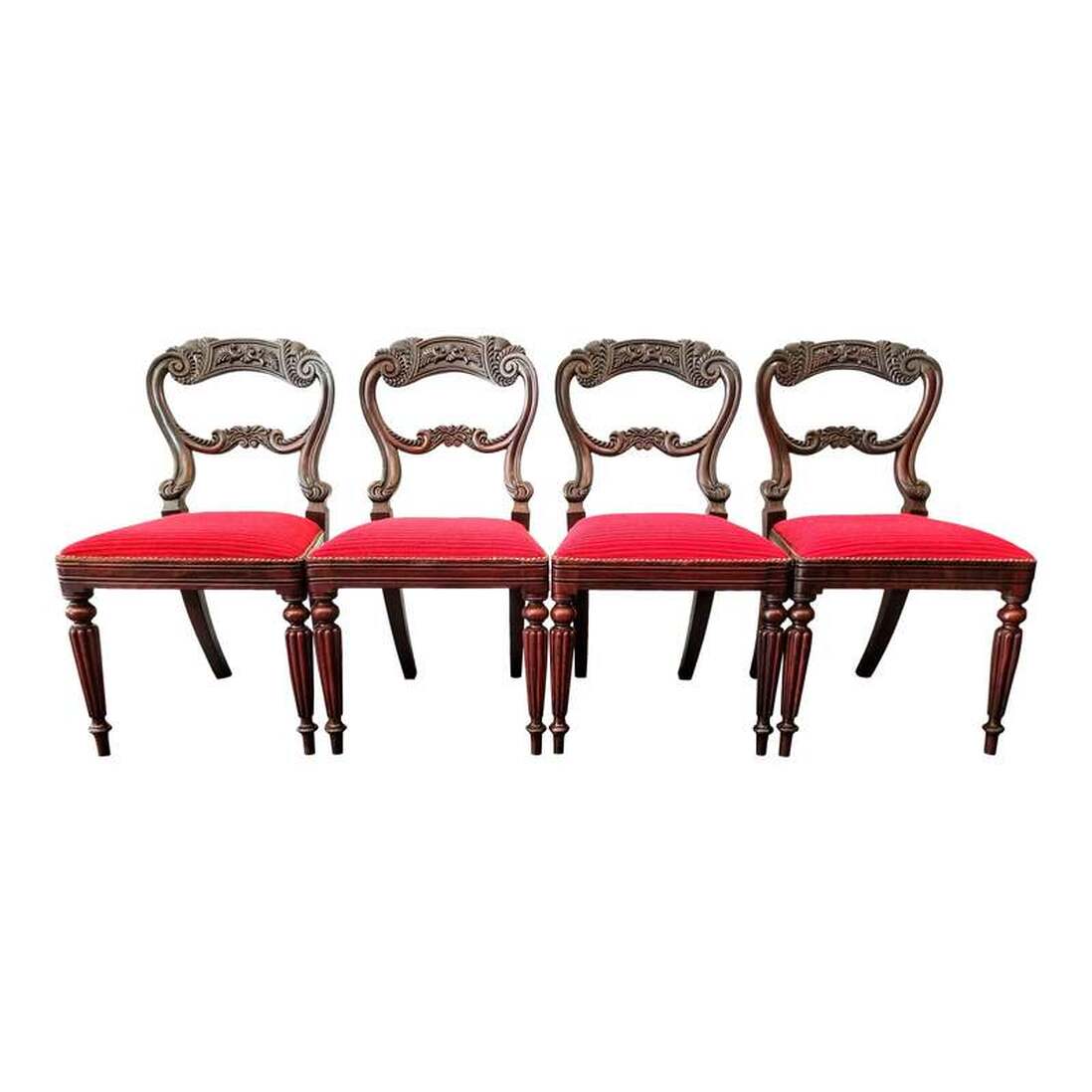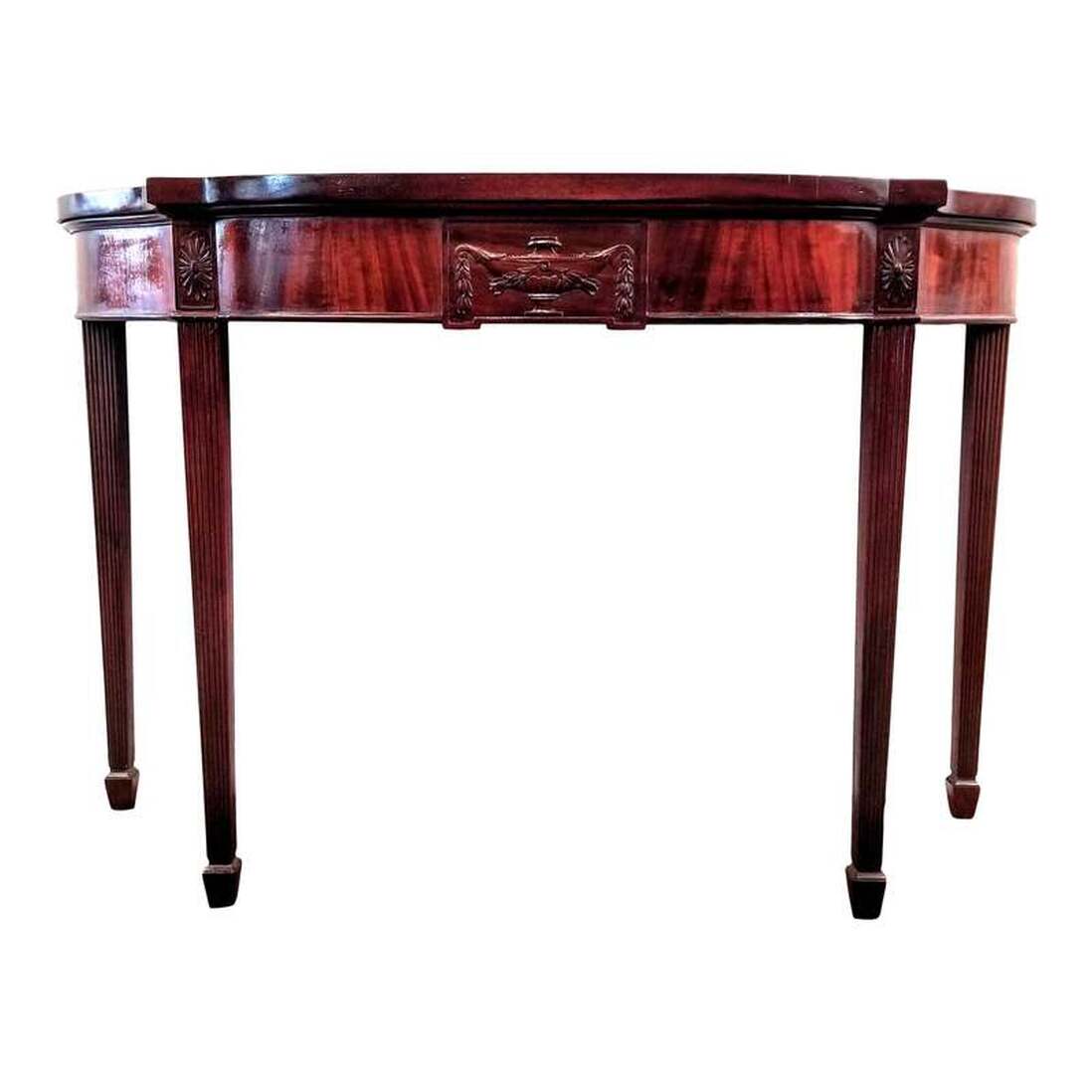Dining Tables, Occasional Tables, Side Tables, Pier Tables, Coffee Tables, Games Tables
The tables listed on this page are a sampler of our table inventory. For the best selection, visit the India Street Antiques warehouse showroom at 2361 India Street in Little Italy, San Diego. You may also contact us by emailing antiques@indiastreetantiques.com with your search requests.
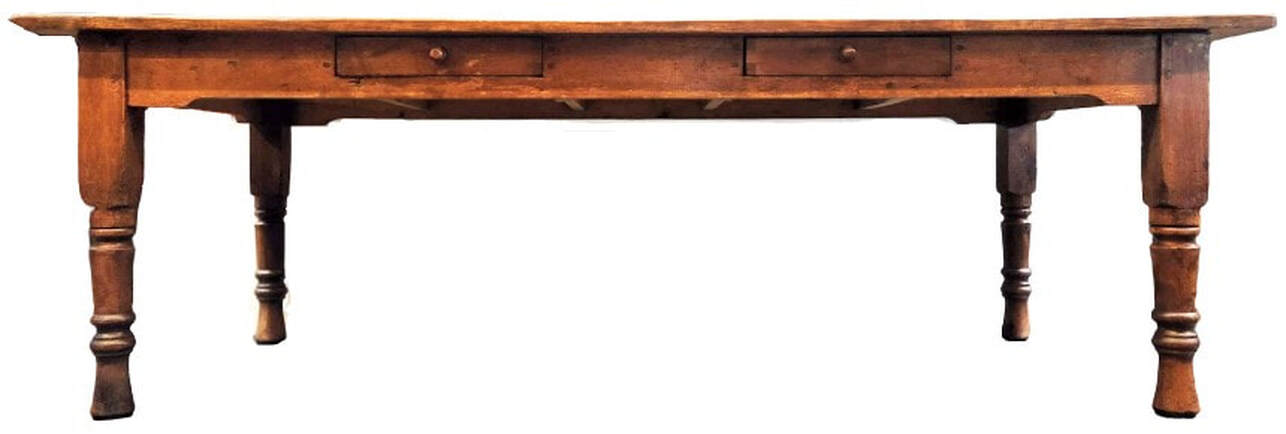
Farmhouse Table | 19th Century | England
Classic 19th-century type kitchen work table is in a form favored in the Victorian decades of the 1850s through the 1880s.
The table is constructed with wooden pegs and pine wood - one of the woods known as "deal" in the 19th century.
The plank top surmounts a curved-bracket apron fitted with two drawers. The drawer fronts are attached to the drawer sides via mortise-and-tenon and feature turned wood knobs. The drawer bottoms are constructed of hand-sawn boards.
The four legs feature the bulbous turning associated with the second half of the 19th century.
100ʺW × 39.75ʺD × 31.5ʺH
$6995
Click on the image above to learn more and to view further photos.
SOLD
French Ebonized Walnut Flip-Top Games Table in the Manner of Victor Joseph Quetin
Antique French ebonized burl walnut flip-top games table executed in the style of Victor Joseph Quetin. Quetin printed lithographs and publications of his furniture illustrations from 1865 until his death in 1877. (See illustration below)
When the table is closed, it may be used as a console table and a writing desk. When the table is open, it may be used for games.
Closed, the table measures 35" wide x 19" deep x 28.5" high with a 23.25" knee clearance.
Open, the table top measures 35.25" x 38".
The table is constructed of burl figured walnut wood embellished with incised and carved decoration on the frieze, frieze corners, and turned legs at the top. The legs are also lighty fluted with ebonized rings and end in ringed arrow feet.
The shaped half-top features a beautiful burr walnut figure. The half swivels and opens out on brass hinges and rests on the telescoping back end to create a games table for four. The full top is inset with a shaped black baize fabric and the corners feature ebonzied cups for coins and chips.
The interior is fitted with cubbies for cards and game pieces.
$ 3595
Click on any of the images above and the illustration below to learn more and to view further photos.
When the table is closed, it may be used as a console table and a writing desk. When the table is open, it may be used for games.
Closed, the table measures 35" wide x 19" deep x 28.5" high with a 23.25" knee clearance.
Open, the table top measures 35.25" x 38".
The table is constructed of burl figured walnut wood embellished with incised and carved decoration on the frieze, frieze corners, and turned legs at the top. The legs are also lighty fluted with ebonized rings and end in ringed arrow feet.
The shaped half-top features a beautiful burr walnut figure. The half swivels and opens out on brass hinges and rests on the telescoping back end to create a games table for four. The full top is inset with a shaped black baize fabric and the corners feature ebonzied cups for coins and chips.
The interior is fitted with cubbies for cards and game pieces.
$ 3595
Click on any of the images above and the illustration below to learn more and to view further photos.
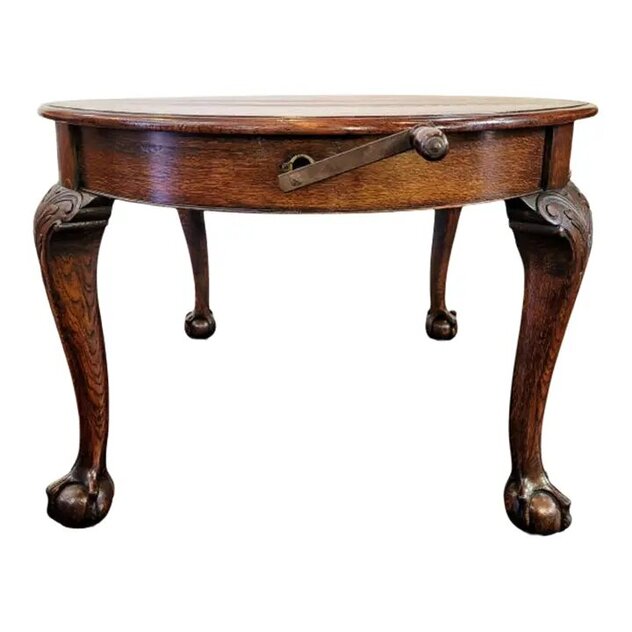
Victorian Crank Extending Table | England | Late-1800s | 2 Leaves | Chippendale Style
Late Victorian oval dining table extends with a crank mechanism from 53" to 83.5" with the two leaves in place.
The table is constructed of English oak and executed in the Chippendale style indicated by the carved-knee cabriole legs ending in dragon claw and ball feet.
The apron is enhanced with blocks and a plain molded edge and houses the brass lined hole for the crank.
The crank mechanism carries its metal trade label from Joseph Fitter, owner of Britannia Works, Birmingham, patentee and sole manufacturer of the Double Action Screw Table Expander.
Click on the image above to learn more and to view further photos.
41.5" deep
53" closed
83.5" open with two leaves in place
29.5" high
24.5" to apron
$ SOLD
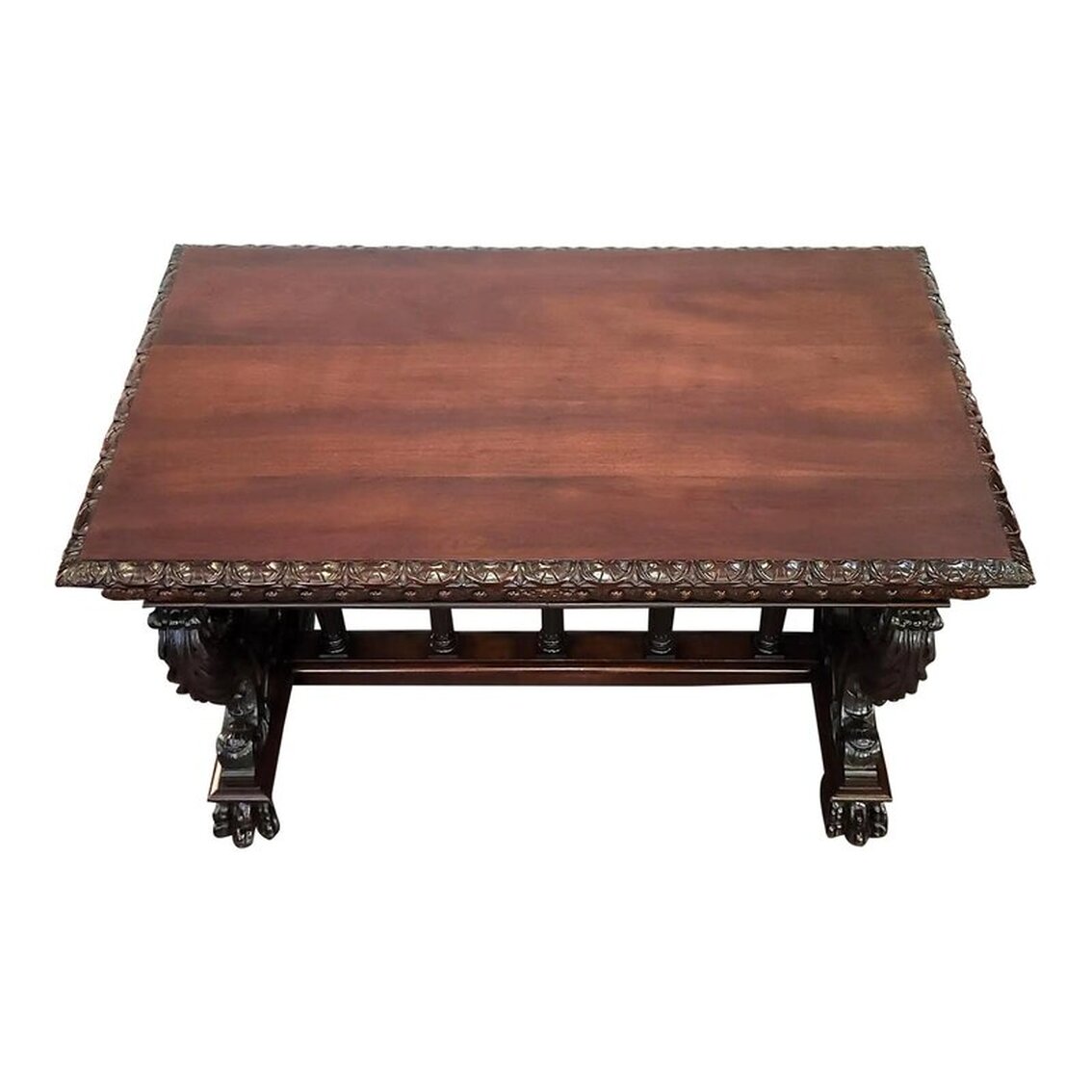
Library Table | 19th century | Italian Renaissance Revival
Carved walnut table with two frieze drawers and two draw leaves.
May be useful as a console table, center table, entry table, library table, and writing desk.
Click on the image above to learn more and to view further photos.
54.25ʺW × 32.5ʺD × 31.25ʺH

Coffee Table | Spanish Revival | McClellan Manufacturing Company, Los Angeles | 1920s
Vintage 1920s Spanish Revival coffee table made by McClellan Manufacturing Company of Los Angeles, California.
The coffee table is crafted from solid Spanish Cedar.
The top is embellished with sixteen black wrought iron square medallions screwed down to the wood, eight across on each side.
Under the top is a brass furniture label stating the table was "Made By The McClellan Manufacturing Company, Los Angeles".
The s-curve shaped apron has been applied to all four sides.
The four square shaped table legs have canted corners.
The feet are turned and ringed over a bun foot.
36" wide x 17" deep x 20.25" high
SOLD
Click on the photo above to learn more and to view further images.

Dining Table with Leaf | Mechelen, Antwerp, Belgium | c. 1900
Well-crafted, beautiful, and sturdy carved oak dining table made in Mechelen, Antwerp, Belgium, circa 1900.
The closed table top is built from quarter-sawn oak wood, sometimes called tiger oak for the golden rays in the figure. The table top shows a seam down the middle. This is where the two ends of the top open for leaf placement. The table top edges are molded and match the molding on the ends of the table leaf. The corners are canted.
The table leaf is made from burl figure oak wood and has a finished molded edge to match the two halves of the table top. The leaf is placed in between the two halves of the table top to extend the length of the table. Underneath the center top on each side are round brass latches that lock the table top in place. We installed these latches. They easily unlatch to open the table for leaf placement. The steel plate at center is part of the old latching system and shows how a bar would have run through to hold the table top in place.
The table apron is embellished with carved arches and gadrooning with a molded bottom edge. The four canted corners are inset with carved blocks featuring projecting lion's heads. The holes through the mouths indicate the lion's heads once had hanging rings, a mask and handle motif dating back to ancient Rome and representative of strength, courage, and majesty.
The four oak corner legs and the two center legs are tapered over square blocks embellished with layered geometrics, turned, ringed, and carved, and end in turned, ringed arrow feet.
The Flemish style curved stretchers on each end attach to the square blocks on the legs.
The trestle is set between the two center legs and features a gallery of six turned wood Greek urn or amphorae shaped elements.
SIZE:
CLOSED:
50" wide
38.5" deep
30" high, floor to top of table
24" knee clearance, floor to apron
OPEN:
72.5" wide
38.5" deep
LEAF:
22.5" wide x 38.5" deep
SOLD
Click on the photo above to learn more and to view further images.

Coffee Table | Bolivian Rosewood | Circa 1980s | Italy
High-gloss finish Bolivian Rosewood ( Machearium Villosum ) rectangular coffee table in a Traditional design with eight reeded top sabre legs on two trestle bases.
Table will complement interiors incorporating style elements such as English Regency, Hepplewhite, Sheraton, Georgian, British-Raj, British Colonial, Art Deco, Art Moderne, Empire, and Duncan Phyfe.
Click on the photo to learn more.
48ʺW × 28ʺD × 17.5ʺH
SOLD

Indian British Colonial Rosewood Marquetry Parlor Table
This item includes restricted materials and can not be sold outside of the contiguous United States.
Antique rosewood parlor table with cabriole jambes (French legs that were introduced in French furniture in the late Louis XIV style) and a shaped lower shelf.
The top features a sadeli (marquetry) village goat herding scene with a background showing mud architecture and a pair cooking at a pot over a fire. The scene is created with various woods and bone.
Sadeli, or marquetry, is a folk art specialty of craftspeople in Surat, Gujarat, India. Surat was the first headquarters and trading outpost established by the English East India Company in 1608, which led to British Raj in India.
This Anglo-Indian beauty would have been created in the late Victorian through Edwardian periods, or circa 1880 to 1910.
Click on the photo to inquire about purchasing.
24.5ʺW × 14.5ʺD × 29.75ʺH
1495
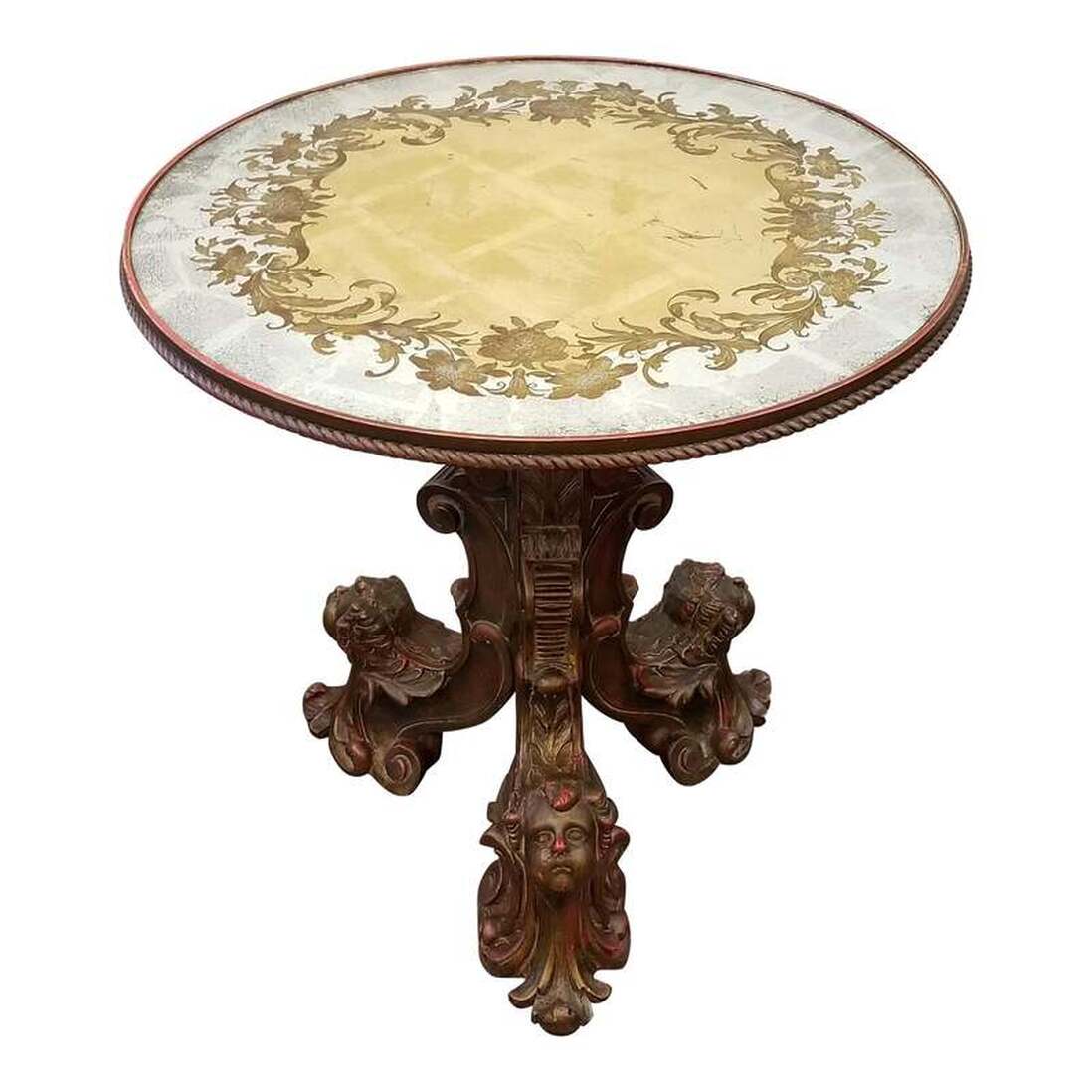
Italian Baroque Gueridon ( Center Table ) With Putti and Verre Églomisé Top
1870s - 1930s
The ornate carved giltwood tripod base features putti heads, acanthus leaves, and geometric decoration. The carved wood trim and base is highlighted with red paint in the manner of Regency period Verre Églomisé furnishings.
At the top of the baluster stem sits a hand crafted round Verre Églomisé top gilded in silver and gold with etched and painted floral and leaf imagery.
Click on the image to learn more.
29ʺW × 29ʺD × 28.5ʺH
6995
